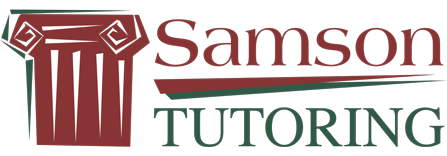What Kind of Education Do You Want For YOUR Child?
First in a series: Language Arts
My husband recently “babysat” a friend’s nine year old while the latter participated in his online public school classes. My husband came home that evening and looked at me. “Have you listened to what goes on in those classes?” he asked.
Why, yes. And it vindicates my decision, lo these many years ago, to homeschool my children. Not all schools are the same and certainly teachers now are valiantly trying to impart education under trying circumstances.
However.
Listening – or even more – helping students to complete their online assignments has clarified the differences between how I want to teach children and the “norm.” These thoughts are on education at the elementary school level.
What Happened to Literature?
Charlotte Mason had a word she used for poor quality reading material for children: twaddle. Children should read both for pleasure and information, but giving them twaddle to read does not promote a literate child. Reading is not only a source of pleasure and information. It is also how one acquires language, a sense of grammar and spelling, as well as an innate sense of poetry – the beauty of language both for the ideas it conveys and the manner in which the ideas are expressed. These are acquired as one reads. Reading twaddle encourages sloppy grammar and a childish sense of how to express oneself in the written word.
At Samson, third and fourth grade students as a group read books such as Rascal and My Side of the Mountain and have access to the free reading bookshelf containing books such as Little House on the Prairie, Alice in Wonderland, and Wind in the Willows. In addition to these and other classics, Caldecott award winners are another good source of children’s better literature.
What’s Going on with Writing?
I agree with Charlotte Mason that children must be taught to organize their thoughts through oral narration before being asked to express themselves through writing. I am especially frustrated by insistence that young children write in particular styles of composition: expository, persuasive, etc. Children under the age of 9 learn the mechanics of writing (and absorb grammar and spelling) through copywork: copying sayings, poems, or excerpts from literature. They learn to organize their thoughts by narrating to the teacher what they have read or heard the teacher (or other student) read to them.
Starting at about age 10, children use written narration to narrate back to the teacher the same kinds of information. In this way, writing (composition) is not a separate subject in itself, but integrated with other subjects such as history or literature. Styles of writing (expository, etc.) are introduced at the middle school or even high school level, not elementary school.
| A Side Note About Fine Motor Coordination In addition to handwriting skills such as printing and cursive, I also teach handicraft skills such as weaving, knitting, and playing the recorder. Particularly for boys, I see a correlation between a reluctance to write and difficulty forming letters. Activities such as these are a useful – and fun! – adjunct to copywork and Handwriting Without Tears workbooks to strengthen hand muscles and develop fine motor control. |
What Happened to Grammar?
All this talk about “naturally absorbing” language is not to say we do not study the rules of sentence construction, also known as grammar. However, at the lower elementary levels grammar is not presented in separate lessons but part of copywork and reading. Starting at third grade, students have (short) formal grammar lessons three times a week using The Well-Trained Mind worksheets. Students are taught the parts of speech and are introduced to sentence diagramming. An understanding of grammar produces clear writing and a foundation for the study of foreign languages.
What Happened to Spelling?
Granted my experience is limited to just two schools, but I have yet to see spelling taught in any of the online classes I observe. In my pod school, we do daily exercises in sight words AND daily worksheets on spelling words of the week. Our sight word exercises – writing in the air, visualizing the word in our minds, writing in the palm of our hand, spelling out loud – not only address different types of learning, but serve as models for retaining information which will prove useful in upper grades and higher education. For workbooks, we use Spelling Workout, which is phonics-based. Upper levels focus on vocabulary and word origins. (Starting in the 4th grade, students also complete Vocabulary from Classical Roots workbooks.)
A Firm Foundation
Education at the elementary level should provide a firm foundation for more advanced material. Children who do not get a solid grounding in basic language skills will have difficulty in upper level instruction. While many children do well in public schools, those who need extra time – or more accelerated work – will benefit from the individual attention afforded by home education or a pod school. These kinds of environments also give us the opportunity to consider how the material should be taught. Material and mechanisms chosen for logistical, or political, reasons in a setting of 25 children or more do not necessarily apply in the micro-sized classroom. For parents to have true freedom of choice, they must be aware of their options. The above describes other, time-tested, methods of education.

Leave a Reply
Want to join the discussion?Feel free to contribute!